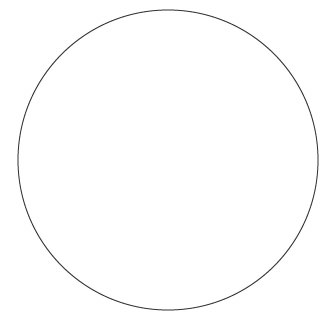
In a story that always strikes me as apocryphal the Pope sends a messenger to Florence to ask Giotto for a sample of his work. Giotto takes a brush, draws a circle in red paint so perfectly it could only have be done with a compass, hands it to the messenger, and the rest is history — or fiction. It's a nice story, published in 1550 by Vasari in his Lives of the Most Excellent Painters, Sculptors, and Architects. It has been endlessly repeated.
Giotto lived in the late 14th, early 15th centuries, so Vasari wrote from a distance of, give or take, one hundred fifty years. The red paint was a nice touch. What it means in this context is anyone's guess, but the circle is obvious. Circles symbolize perfection. No one, as the saying goes, has ever seen a perfect circle, or a perfectly straight line, yet everyone knows what they are. We've all tried to draw freehand circles at one time or another, so we all know how far we fall from perfection. Circles, like ourselves, are imperfect things in an imperfect world. Giotto's circle was and remains perfect because it was born and must live only in our imagination.

